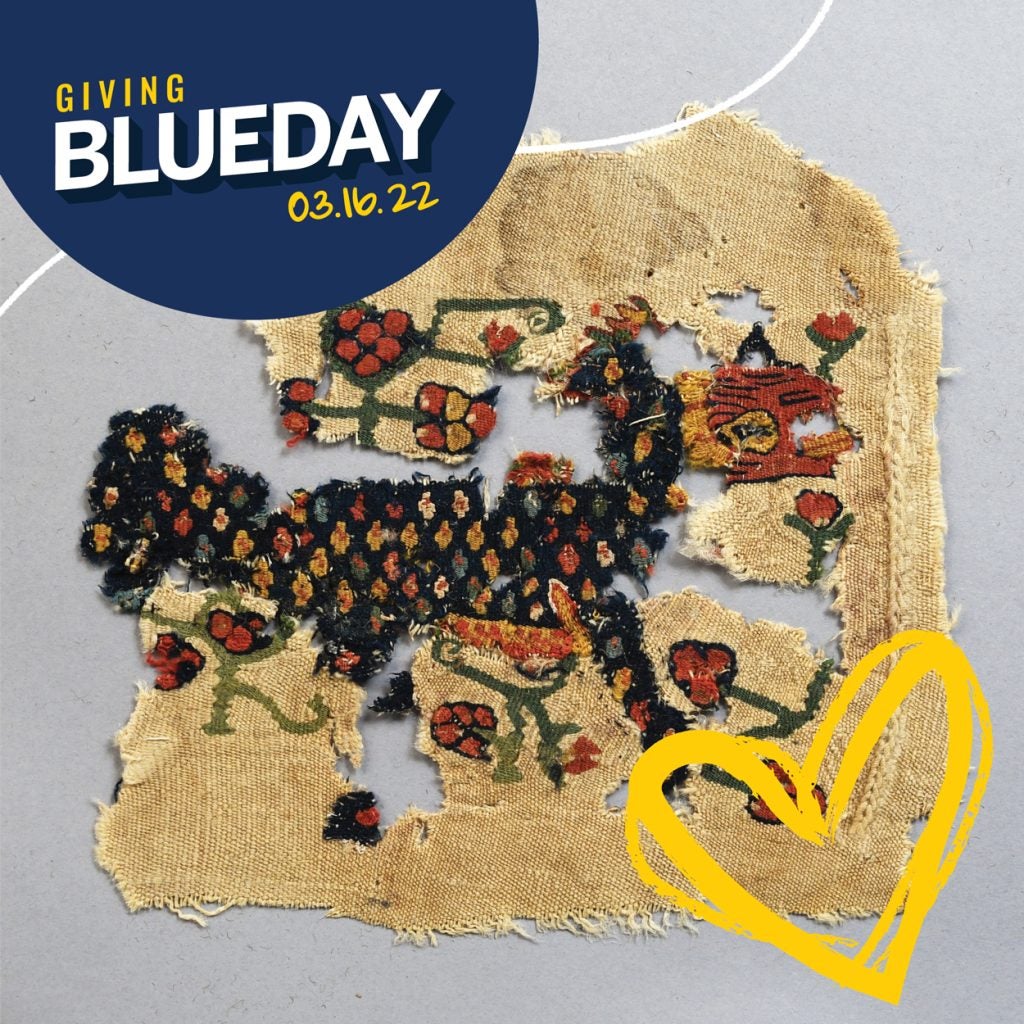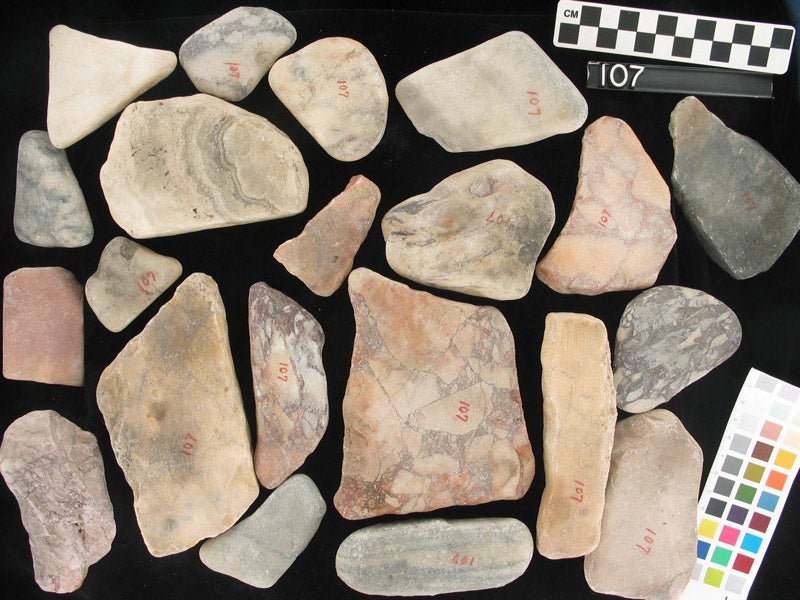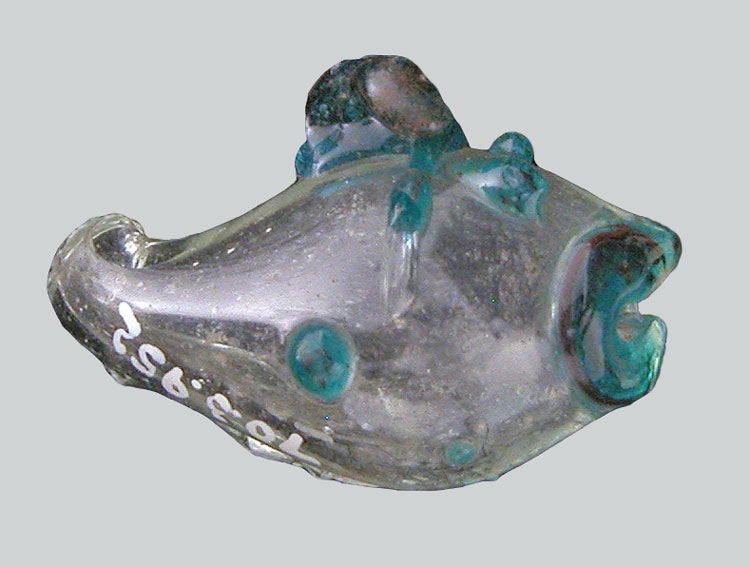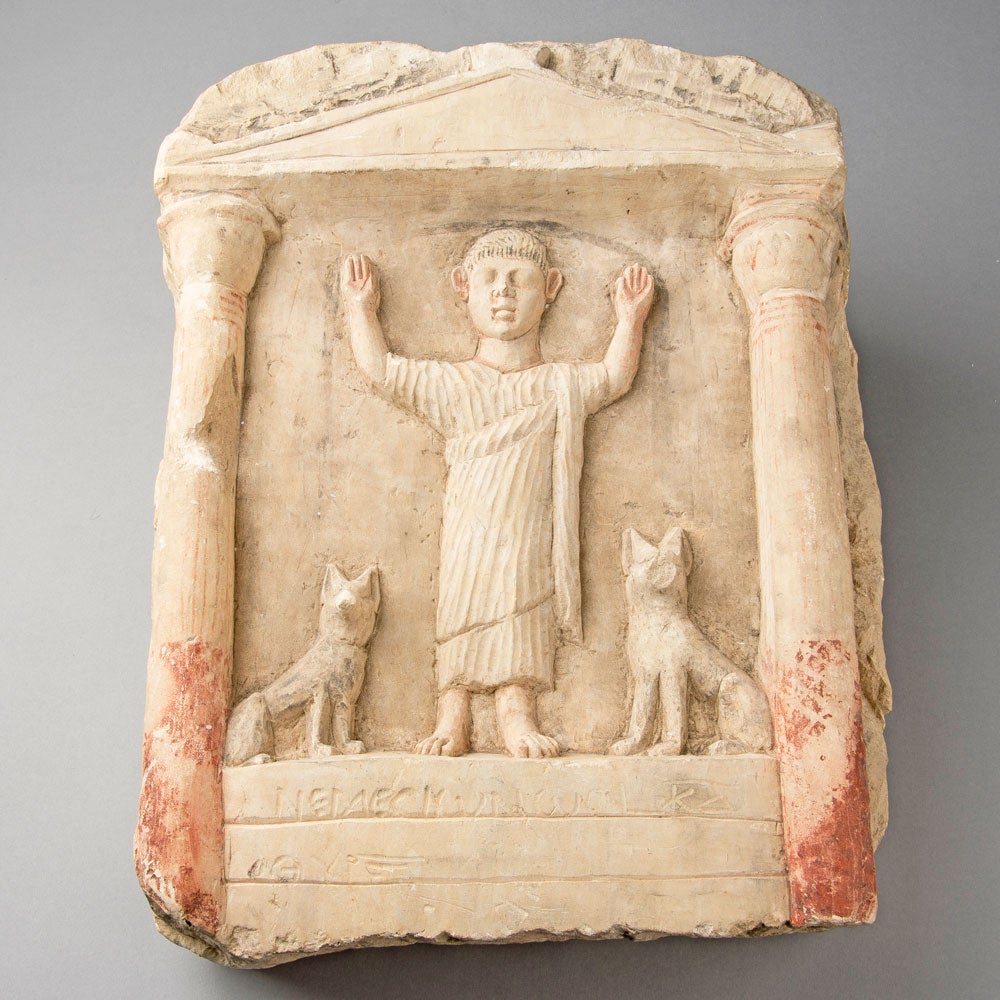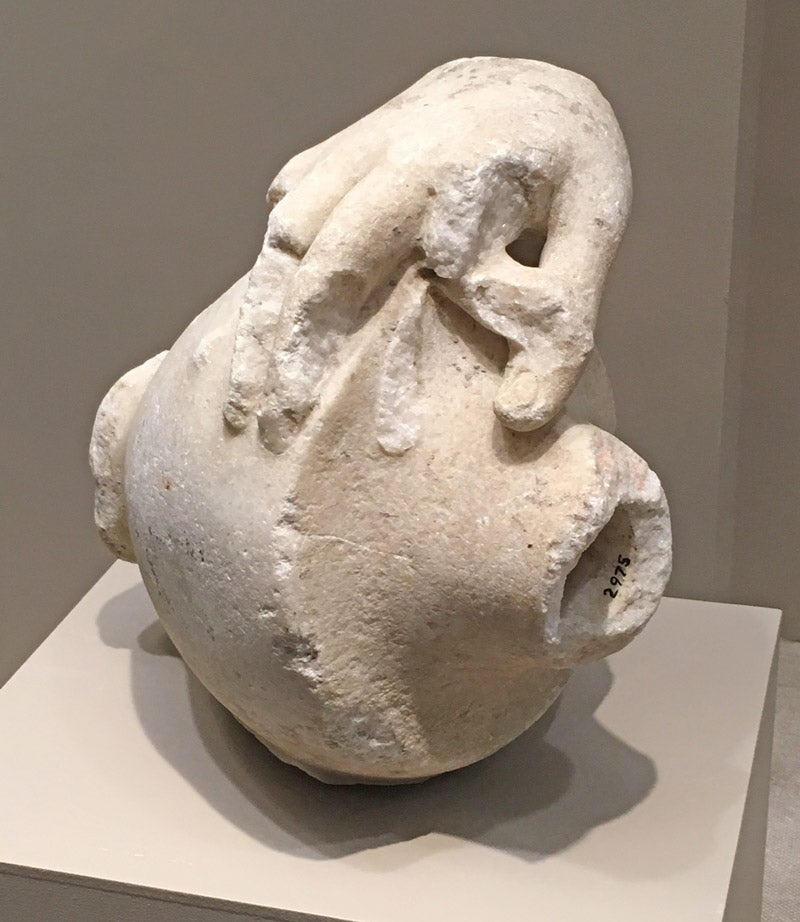Ugly Object of the Month — March 2022
By Caroline Roberts, Conservator
This month we are celebrating Women’s History Month with an uncharacteristically handsome Ugly Object: a sestertius coin featuring the indomitable empress Julia Domna.
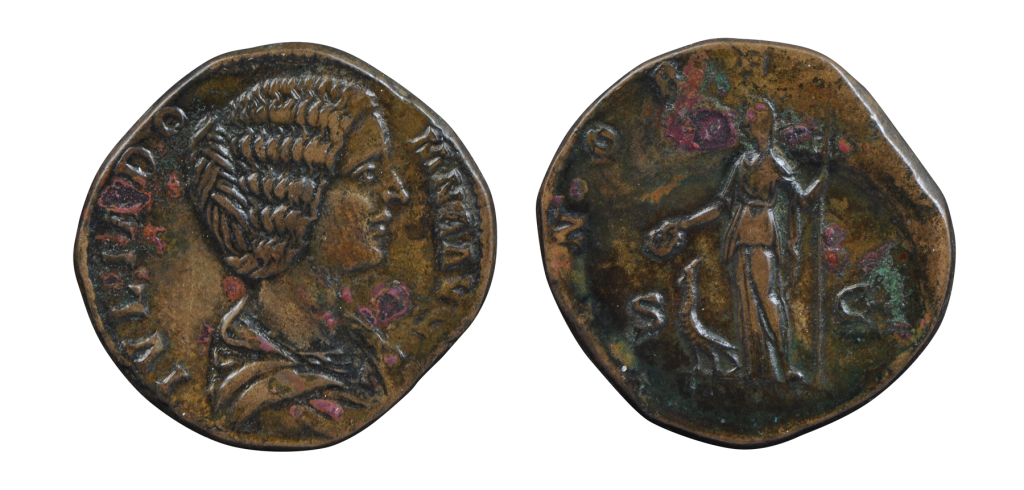
Julia Domna was born in modern-day Syria to a family of Arab priests and became empress of Rome when her husband, Septimius Severus, defeated multiple co-contenders to the imperial throne in 197 CE. Julia Domna was a highly visible and powerful political figure who influenced the reigns of both her husband and her son, Caracalla. Her image appears in a range of marble carvings, in painted wood on the famous Severan Tondo, and countless coins—including KM 1991.2.657. Julia Domna appears on the obverse side of this coin draped with hair coiled and waved, encircled by her honorary title, Julia Domna Augustus. The goddess Juno, accompanied by a peacock, appears standing on the reverse.
These powerful images of women—one historic, one mythical—would have played an important role in amplifying the authority of the emperor by circulating the empire as currency. We don’t know where this coin was found, but I like to imagine it was carried around in the pocket of someone outside Rome—maybe as far afield as Julia Domna’s own hometown?
Attention, Ugly Object devotees! Giving Blueday is Wednesday, March 16!
Announcing 2022’s Giving Blueday, the University of Michigan’s 24-hour celebration of giving. Every March since 2014, the global U-M community has come together on Giving Blueday in support of programs and causes they care most about.
We know that the Kelsey’s Ugly Objects are uppermost in your mind when you consider making charitable donations with your hard-earned money. Any donation you make to the Kelsey Museum on Giving Blueday will support our broadest goals—including the careful conservation of these unique beauties. Gifts to the Kelsey are like the artifacts we care for: even if they seem small or insignificant, we love and appreciate every one.
So mark your calendar and give a dollar on March 16! Give two dollars! Give five whole smackers in commemoration of the love we know you feel for Franken Horse!
Learn more about what your donation to the Kelsey Museum supports at our website.
Ugly Object of the Month — March 2022 Read More »

